Earlier this year, my wife and I spent several days in the beautiful city of Vienna. Today, I would like to share a few impressions of this wonderful city, which has much to offer in terms of architecture, culture, coffee houses & classic men’s clothing
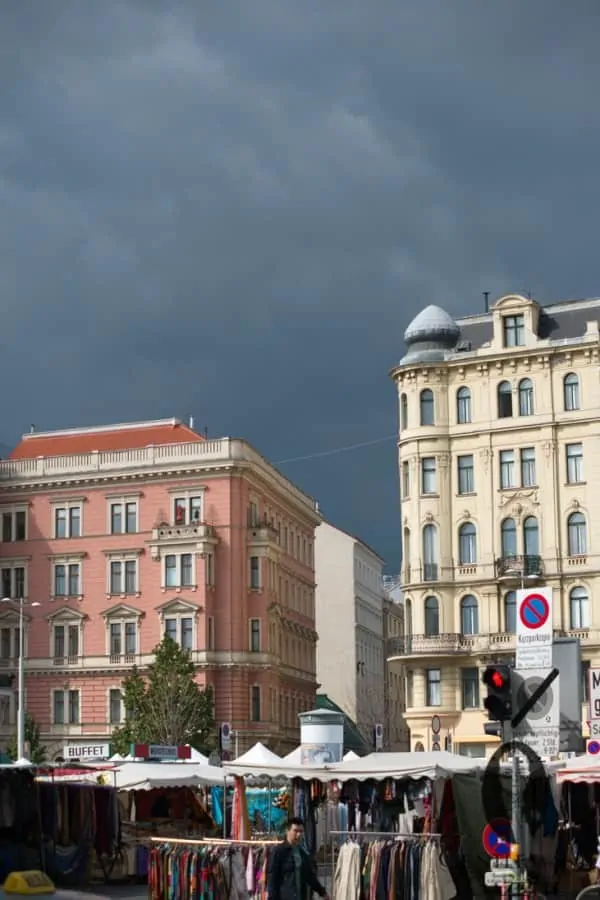
When I visited Vienna several years ago, I visited a number of the famous craftsmen like Materna, Scheer, Maftei, Balint, Kudweis… and so I decided to seek out the more obscure craftsmen of Vienna such as Ruth Sprenger and Netousek. I visited Knize as well, since I did not have the chance to visit them last time. Apart from my sartorial explorations, I enjoyed the magnificent Austrian cuisine, enjoyed the many museums, palaces and fine architecture examples, but I will cover those equally interesting topics in a separate post.
Flea Market
On very first day, we visited the Naschmarkt, which also hosted a large flea market that was similar in size and offerings to the Spitalsfields flea market in London. There, you could find anything from used socks to Biedermeier furniture. Unfortunately, a charming equestrian painting with a magnificently carved & gilded frame was simply too big bring all the way back to the US, just like the Art Deco bar. However, I found a number of tie stick pins, a folding comb and a vintage magazine with many pictures of the Austrian Kaiser. The vendor wanted a hefty 350 € for the issue, so I passed on it, although it would have certainly been a one of a kind magazine. After shopping, we sampled some of the delicous Austrian cheeses and Falafel at the adjacent Naschmarket while enjoying a Radler – a mix of beer and carbonated lemon soda – in the sun. Overall, I can only recommend to stop by at the flea market if you are in town on a Saturday, because the shopping and atmosphere are lively and you will be able to find the typical Viennese mix of Austrians, Croatians, Yugoslavians, and Bosnians, among others.
Vienna Citybike
Afterwards, it was time to head downtown. Instead of walking or utilizing the reliable and affordable public transportation system, we decided to try out Vienna’s citybike system. Once I created an account with my Visa card, 1€ was charged to my card, which enabled me to use a bike for an indefinite amount of 2 hour periods. Once you have checked out a bike, you return it to a station close to your destination. Using the handy mobile app, you can verify prior to your arrival whether any open spots are available, which is essential in busy areas. Over the course of our stay, we used these bikes almost exclusively due to their convenience and the ability to experience the city without wasting any time in unremarkable, scenery-starved metro stations. The only downside of the system are the drop of stations close to popular destinations; they are often totally occupied, forcing you to bike to the next station. Luckily, there are never more than a few hundread yards away. Overall, the citybike experience in Vienna was so positive that I will judge other cities by their bikeability.
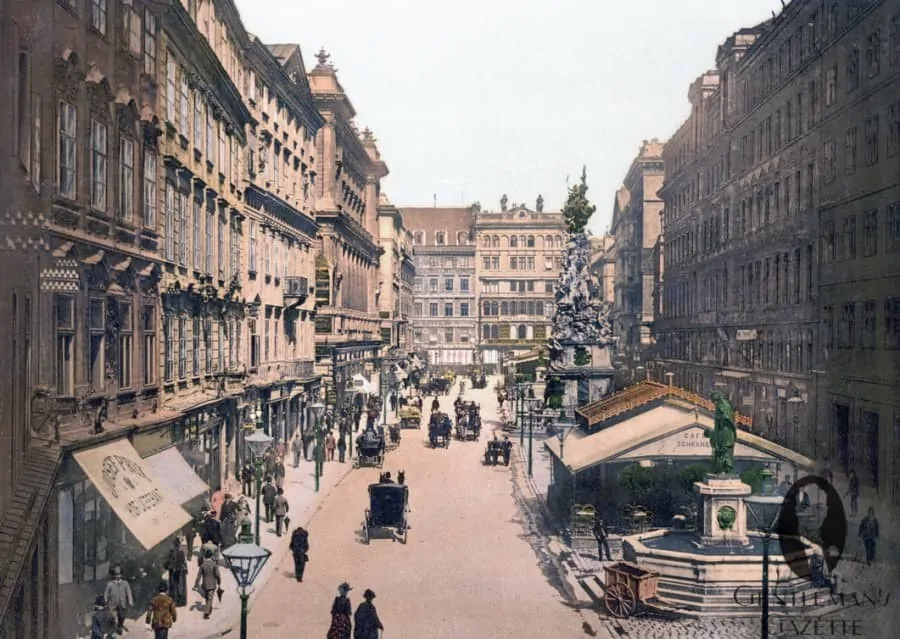
Knize
Once I made it to the Graben, a central pedestrian-only street knows for it’s shopping, I quickly found my way to the legendary haberdasher Knize. Founded in 1858 by the bespoke tailor Josef Kniže, the house specialized in sportswear, riding attire and liveries. At the Viennese world exhibition in 1873, Knize was awarded a medal for progress. Just a year later, they received a Royal warrant from the Persian and Ottoman rulers. In 1880, his son Josef Jr. took over, but he quickly encountered financial difficulties that wouldn’t be resolved until the Pommeranian Albert Wolff stabilized the company in 1885.
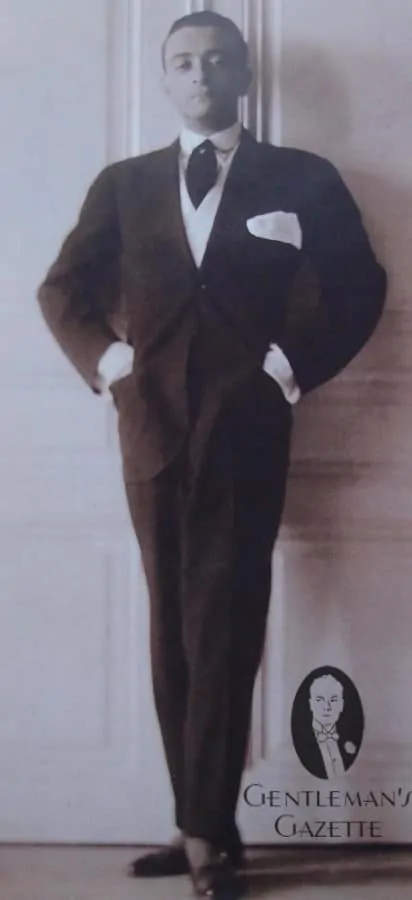
Just a year later, Knize applied to become a königlicher und kaiserlicher Hoflieferant – the Royal warrant to the Austrian monarchy- and it was finally granted in 1888. Josef Jr. died the same year, and Wolff took over. After his death in 1902, his wife and children decided to continue the tailor shop operation as Kniže & Comp. During the following Belle Époque, Knize set the foundation for its fame. From 1910 – 1913 star architect Adolf Loos designed Knize’s second floor and later also the store front at Graben 13, which is still the home of the haberdasher today.
The Knize brand grew in popularity and by 1921, Adolf Loos designed the dependance (satellite offices) in Karlsbad in the Czech Republic, Wilhelmstraße n Berlin in 1924, and the Champs Elysees in Paris in 1927-28. Heinrich Kulka, one of Loos’ students, designed their store in Prague.
In 1915, Knize had already expanded in underwear and in 1922, they added men’s accessories. That same year, the Wolff family hired the Austrian artist and illustrator Ernst Deutsch-Dryden as a brand developer.
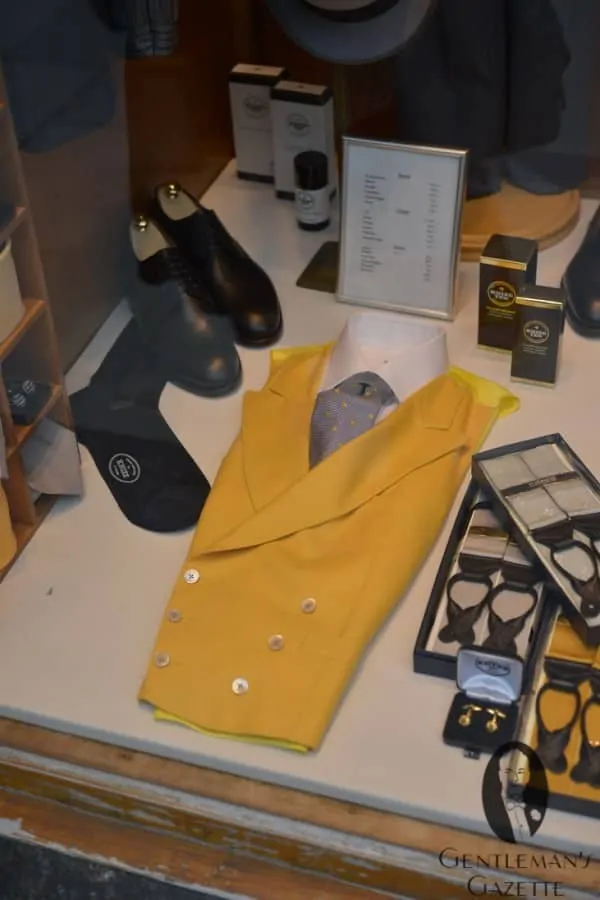
Long before Ralph Lauren, he associated Knize with the polo player and propelled the label to the zenith of men’s fashion at the time. At the same time, Knize started to associate the debonair polo game with its toiletry goods and fragrances such as Knize Ten, with 10 being the top handicap in the polo world. With their ongoing success, Knize expanded into Bad Gastein, Austria in 1937. After Hitler occupied Austria in 1938, the Jewish Wolff family fled Austria and ended up in New York city after a brief stop in Paris. In 1941, they opened another Knize shop in New York where many old clients had likewise fled, and would continue to be their loyal customers. In the meantime, the European stores were managed by the staff, but the war impacted most of the stores financially and the Berlin store was completely destroyed. Once the Iron Curtain rose, the family had to give up the stores in Karlsbad and Prague. In the 1970’s Knize had to close down its Parisian tailorshop as well as the store in New York. In 1976, the former intern Rudolf Niedersüß became a part owner of the business and in 1978 he merged Knize with another traditional Viennese bespoke tailor brand he owned: C.M. Frank. Shortly thereafter, they introduced a ladies collection and in the 1990 they renovated and expanded the Graben premises. Likewise, son Bernhard Niedersüß joined the business, who then went on to open his own tailorshop Niedersüß in Vienna in 2007. With the additional formerly C.M Frank, he tries to continue the once famous brand who was located right next to the Hotel Imperial. During its heyday, Knize attracted stars like Oskar Kokoschka, Marlene Dietrich, Marylin Monroe, Laurence Olivier, King Juan Carlos and many other industrialists. However, they were also the tailor to prominent Nazis like Baldur von Schirach.
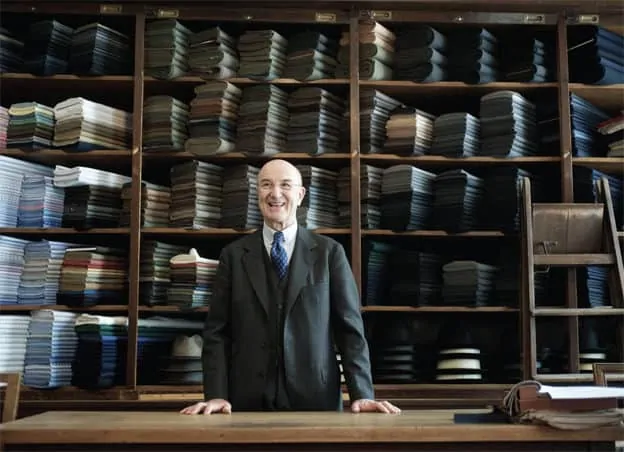
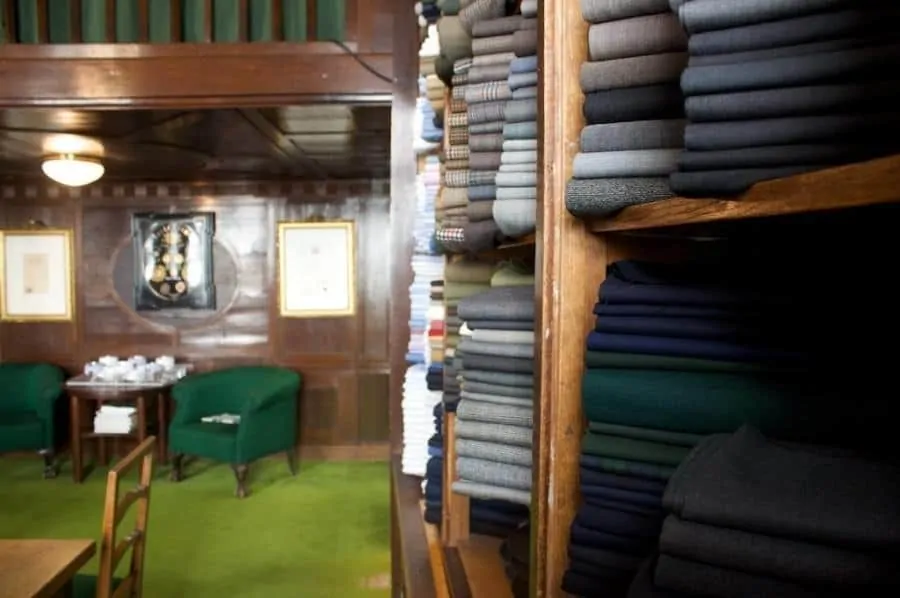
Knize Today
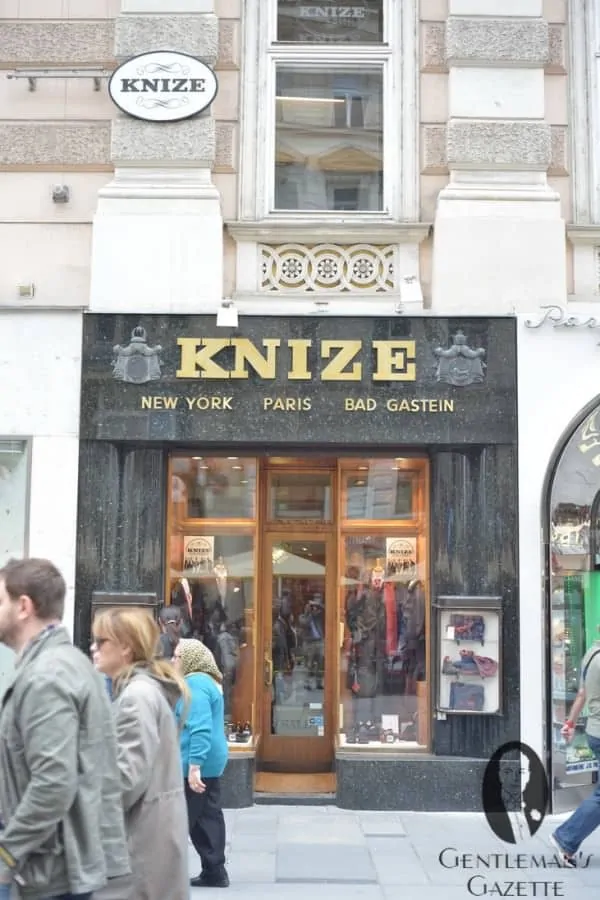
In it’s modern form, it seems to me that Knize exists as a temple to it’s former glory. Before you even enter the store, the sign clearly reads – Knize New York Paris Bad Gastein – on the black marble entrance, despite the fact that all of these stores are now long defunct. More positively, the display windows had a quaint, yet tasteful look. The yellow morning waistcoat looked splendid, though once I entered the store, the feel changed immediately. The narrow room was a bit cramped with shirts on the left and drawers of accessories on the right. I was quickly told not to touch the counters because they may break. Surprised by that, I took a look at the adjacent store, now occupied by Knize, which was designed in a modern way by Paolo Piva in 1992. It was full of
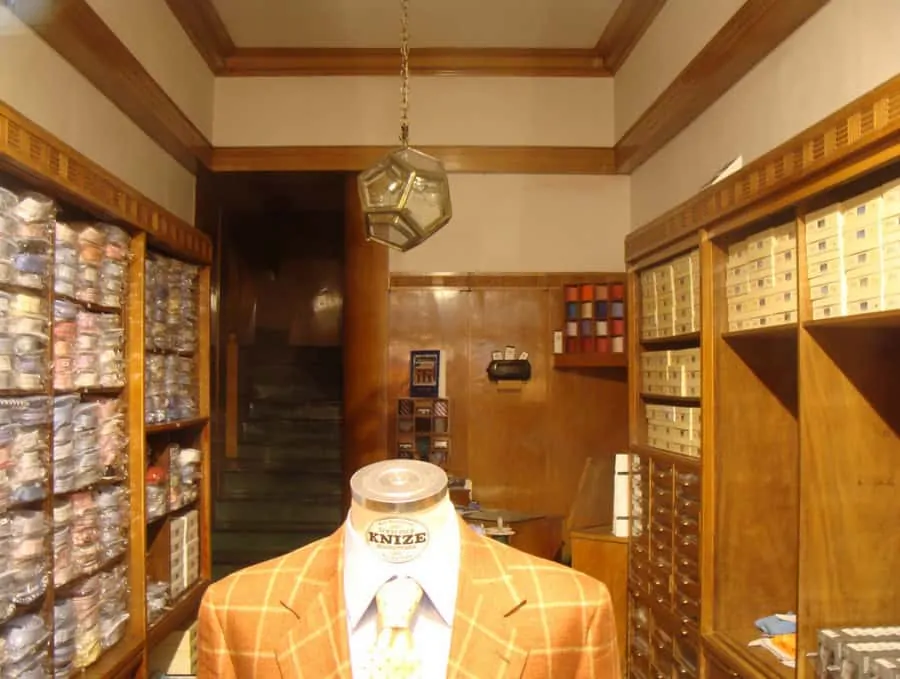
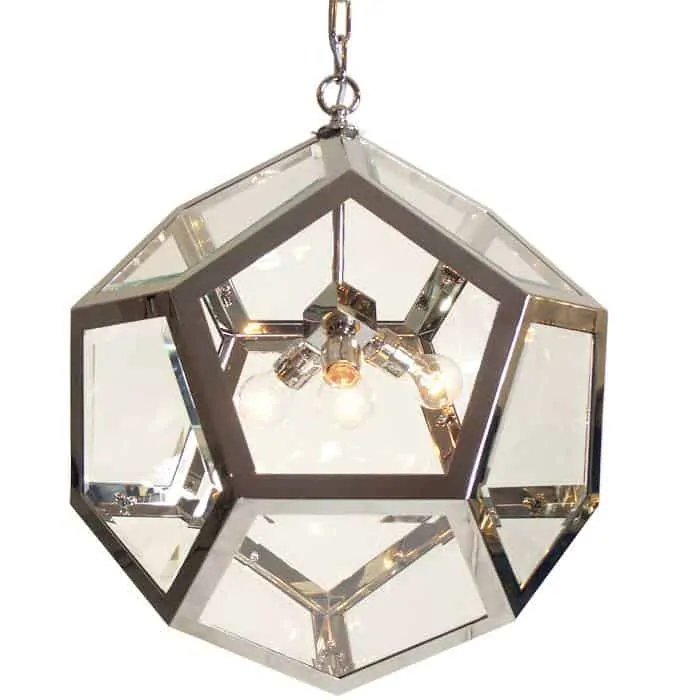
Brioni MTM clothing, but since that was not really what I came for, I went upstairs. Passing the Dodekaeder lamps that were specifically designed by Adolf Loos for Knize, I walked up the narrow, all wooden staircase with green accents. I was surrounded by a number of display windows, green carpet and dark wood. Fortunately, the upstairs premises are more spacious, but unfortunately it was divided into many awkward spaces. It has the look and feel of a men’s haberdashery or tailor shop of the Belle Époque. Apart from a few old fashion illustrations from Ernst Deutsch-Dryden, sweaters, accessories, morning coats and white tie ensembles, there was also fabric for bespoke garments. However, probably the most interesting piece was the riding saddle, which is used for fitting of riding outfits – it was the first time I saw this outside of Britain.
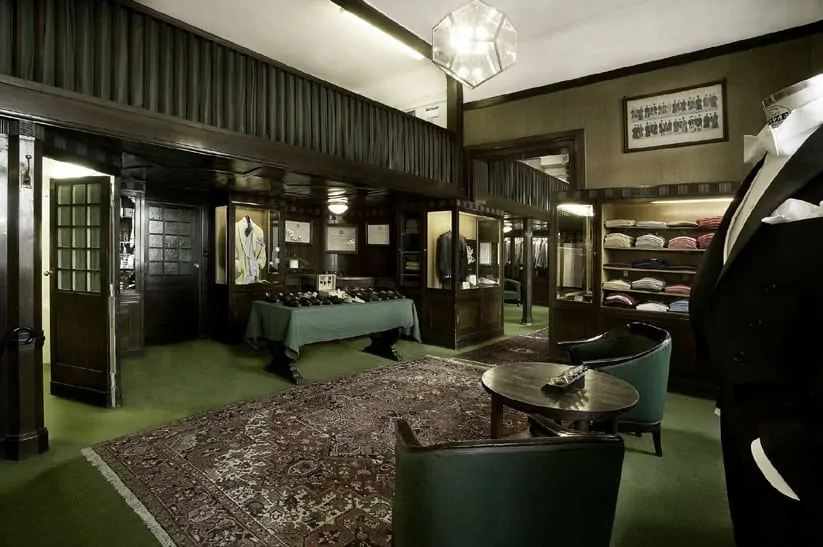
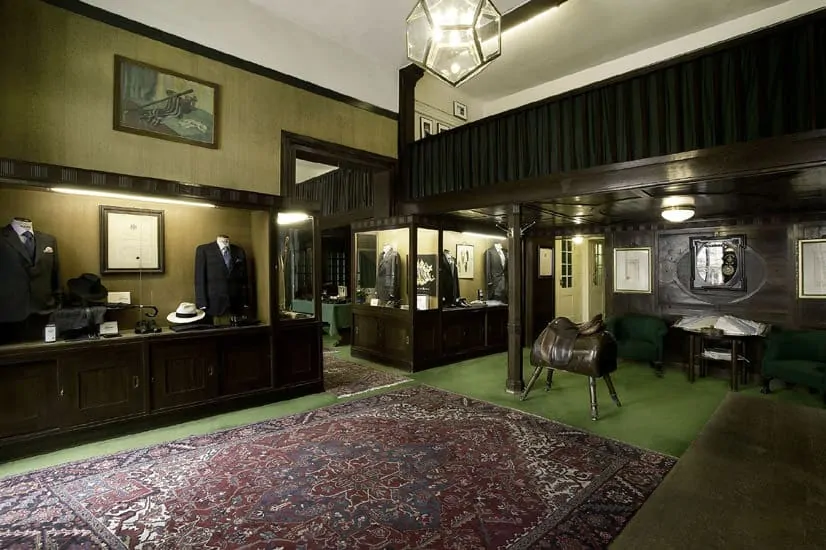
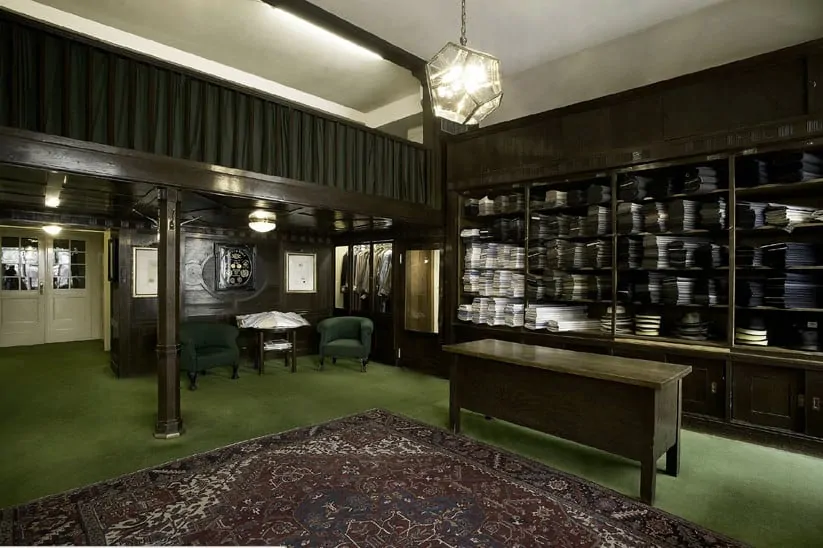
It deserves mentioning that Knize tailors all of their suits in house from start to finish, while the shirt manufacturing is outsourced. Considering the rents in this prime location, the starting price of 6000€ ($7900) for a bespoke suit seems quite high and even above what you have to pay at Savile Row.
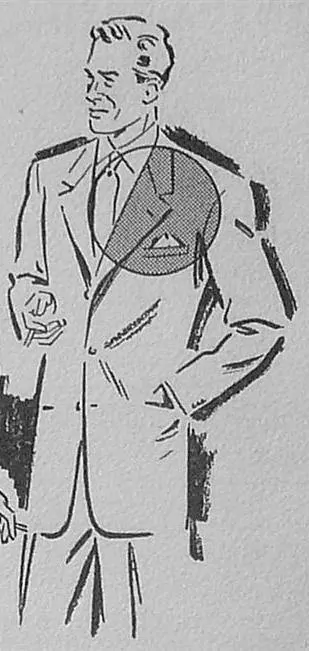
Nevertheless, they turn out about 200 bespoke suits a year, which is quite remarkable.
The house style of Knize is very similar what you can see in Viennese fashion illustrations- inspired by the British, with soft natural shoulders, a bit of drape. The width of the lapels is modest and nothing about their suits is extreme. Their handwork is very neat and in the past, they used to tailor quite a few suits with the so-called Knize lapel, which is basically a notched lapel with an angled gorge instead of a straight one.
The staff, sadly, was not very knowledgeable. I’m certain that the language barrier was not the issue, as we conversed in German. When I asked for the morning waistcoats, I was presented the knit vests and only after a bit of explanation and a reference to the display window downstairs was I able to take a look at them. They were off the rack, all machine made with mother of pearl buttons but a rather boxy fit, which is why I passed on them. The price was around 600€. Interestingly, I could see a number of morning shirts of Frederick Theak at Knize, which has been out of business for years. This tells me that even in Vienna, where formal dress codes are much more alive than in other places, morning shirts don’t really sell in quantity.
Unfortunately, the 77 year old owner Rudolf Niedersüß was not in, but I learned that he still runs the store because the rent would increase by about 40,000€, if his son – who now runs Niedersuesz tailors – would take over. Therefore, they try to keep pushing out the date as far as possible, which is understandable as one of the last traditional stores on a street co-occupied with H & M and Zara.
Verdict
Overall, it was certainly interesting to visit Knize, but considering my high expectations, I was a bit disappointed. Maybe I would have learned more about the house with the owner there. The whole interior looked a little worn and in combination with the not-overly competent staff and high prices, I wonder how much longer Knize will be able to attract customers, especially young ones.
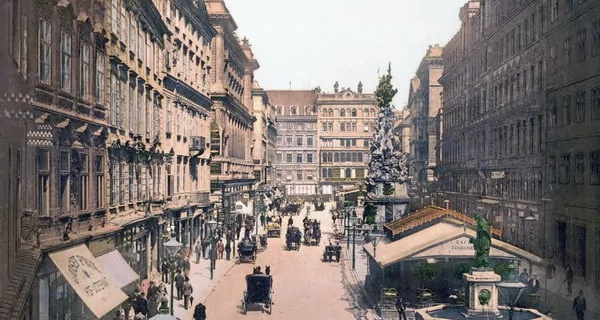
My grandmother was a part-time bookkeeper at the New York store in the late 1960’s and early 1970’s. It was located at East 56th Street between Fifth and Madison Avenues at what is now the Sony building delivery entrance next to the Oxxford store. One of Knize’s New York City celebrity customers was Walter Winchell, the columnist.
My grandmother remarked that the prices were quite high. She also remarked that the custom clothes were not made in-house in New York, but they were made elsewhere. They were finished in the New York shop. I do not know if the custom clothes were made in Knize’s Vienna shop or somewhere else, such as an independent New York City workshop.
The NYC store closed since the building was sold, and for a period it relocated to Columbus Circle. Eventually, the NYC store closed.
I corresponded to Peter Knize. He ran the New York store. He told me that the store closed due to the lack of skilled tailors. I suspect that that is part of the story. They probably had a declining customer base, and it could not be sold to a new buyer. Mr. Knize left the clothing field.
Based on the suit pricing, it seems that its customer base is old-world money and aristocracy. Even when I looked at the New York Knize shop window as a teenager in the 1970’s, the clothes looked unexciting and suited for an older man. However, now that I am older, I think that I would have liked the Knize clothes if I had visited the 1970’s Knize in a time machine.
Dear Mark,
Thank you very much for these valuable insights about Knize. It is certainly a legendary tailoring house, and there are not too many of those around anymore.
The styling is indeed quite conservative, just like its clientele.
Thank you for this balanced report. What a pity that Knize is struck between these fundamental choices. They need a young, dynamic management, but this would mean they cannot stay at the premises. Still, they’d rather make a fundamental choice now than collecting dust…
Was just in Vienna over the Christmas holidays. tons of puffer jackets everywhere but plenty of pea cocking too. wonderful article